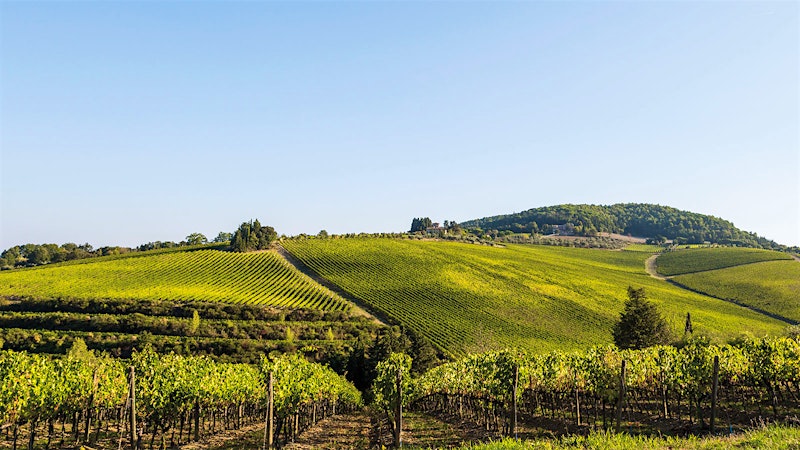Amarone della Valpolicella is the signature red of Italy's northeastern Veneto region, located about an hour and a half west of Venice and just 20 to 30 minutes north of Verona. The Valpolicella area encompasses five parallel valleys, bordered by the Adige River to the west and the town of Soave, about 15 miles to the east.
In addition to Amarone, wines labeled as Valpolicella and Valpolicella Classico or Classico Superiore are also produced from the area, using the same grape varieties. Almost all producers bottling Amarone also offer Valpolicella, with versions ranging from a light, easy-drinking red to serve with pizza to the rich, sappy Valpolicella Ripasso, which often shows like a baby Amarone.
What separates Amarone from the area's Valpolicella bottlings is its distinctive production process and resulting character. This is largely attributable to a drying system known as appassimento, which brings a marked level of complexity to both the production process and the wine.
Prior to appassimento, the region's Corvina, sub-variety Corvinone, and Molinara grapes are grown, with harvest typically taking place in early to mid-October. The appellation allows the inclusion of other varieties (up to 25 percent), and the local Rondinella and Oseleta grapes are common blending partners.
"All of the grapes [for Amarone] are late-harvesters," says Franco Allegrini of the Allegrini estate. "So you run a risk." Rain later in the growing season can take a long time to dry out in the vineyard, increasing the possibility of fungal development. Growers in the area prize well-ventilated sites, particularly those on hillsides, and only the healthiest grapes are selected for Amarone—ideally, loose bunches that allow for airflow and that will dry evenly during appassimento. After harvest, the grapes are dried for up to four months prior to pressing.
Traditionally, grapes for Amarone were placed on straw mats in fruttaios, drying buildings located on windy hillside areas, and Amarone was only produced in the best years, when the quality of the fruit at harvest was partnered with naturally moderated, beneficial conditions in the fruttaio (cooler fall and winter temperatures and consistent humidity levels). Today, most producers have replaced the straw mats with more sanitary plastic crates, and drying facilities incorporate varying degrees of technology to maintain peak conditions.
During appassimento the grapes undergo a dramatic transformation. Physically, they lose about 30 percent to 40 percent of their weight via water evaporation, significantly changing the ratio of grape skin, seed and pulp. Chemically, acidity decreases and sugar content increases, with a change in the ratio of fructose to glucose. This typically raises levels of polyphenols as well as glycerin, making the resulting wine drier and richer in taste, darker in color and silkier in texture. But the drying process is delicate—and fraught with potential disaster.
"The idea is to dry gradually until January," says Francesco Grigoli Quintarelli of the Giuseppe Quintarelli estate. "The difficult part is the first three weeks, when the grape is humid from the field. Once the stem is dried it's much safer."
The grapes are susceptible to the development of mold, most often botrytis.
A limited amount of cleaner, drier botrytis is sometimes considered beneficial for Amarone: It imparts flavor and textural complexity for silkier wines, with interesting oxidative notes of nuts and dried fruit. Historically, this was often considered a positive quality, though many of today's producers avoid these characteristics. But botrytis can easily present as the more common gray rot—a blanket of mold covering the entire surface of the grape rather than limited botrytis on individual berries. Gray rot spells disaster, making the production of a drinkable Amarone virtually impossible.
After appassimento, the grapes are pressed and fermented as red wine. Pressing can now legally take place as early as Dec. 1, but many producers wait until the historic time frame of late January or early February. A shorter drying period creates wines that are rounder and more fruit-forward and generous in their youth, while traditionalists prefer the more structured versions that result from additional drying time. Once the grapes are pressed, fermentation begins, typically long and slow due to the low winter temperatures.
In the past, "stuck" fermentations were a problem: When it was too cold the chemical reaction would stop and start, often leading to the creation of volatile acidity in the wine. As with the development of botrytis and the oxidative characteristic it promotes, some find that a limited amount of volatile acidity adds a positive note of complexity. But for others, it's a flaw, and rampant volatile acidity—a pervasive acetone note—ruins a wine. To avoid these pitfalls, producers today rely on modern, temperature-controlled wineries and/or fermentation vessels, and more often, cultured yeasts designed to excel at low fermentation temperatures.
After the fermentation and winemaking process, the finished wine is aged for at least two years prior to release, or four years if the Amarone is labeled as a riserva. Many of the region's best producers will age their Amarone for additional time, anywhere from five to 10 years in total. Few wineries still use the large cherry casks that were once the norm for aging Amarone; most today opt for oak. Depending on the preference of the winemaker and the desired end wine, everything from small, new French oak barriques to large Slavonian tonneaux are commonly used for aging.












